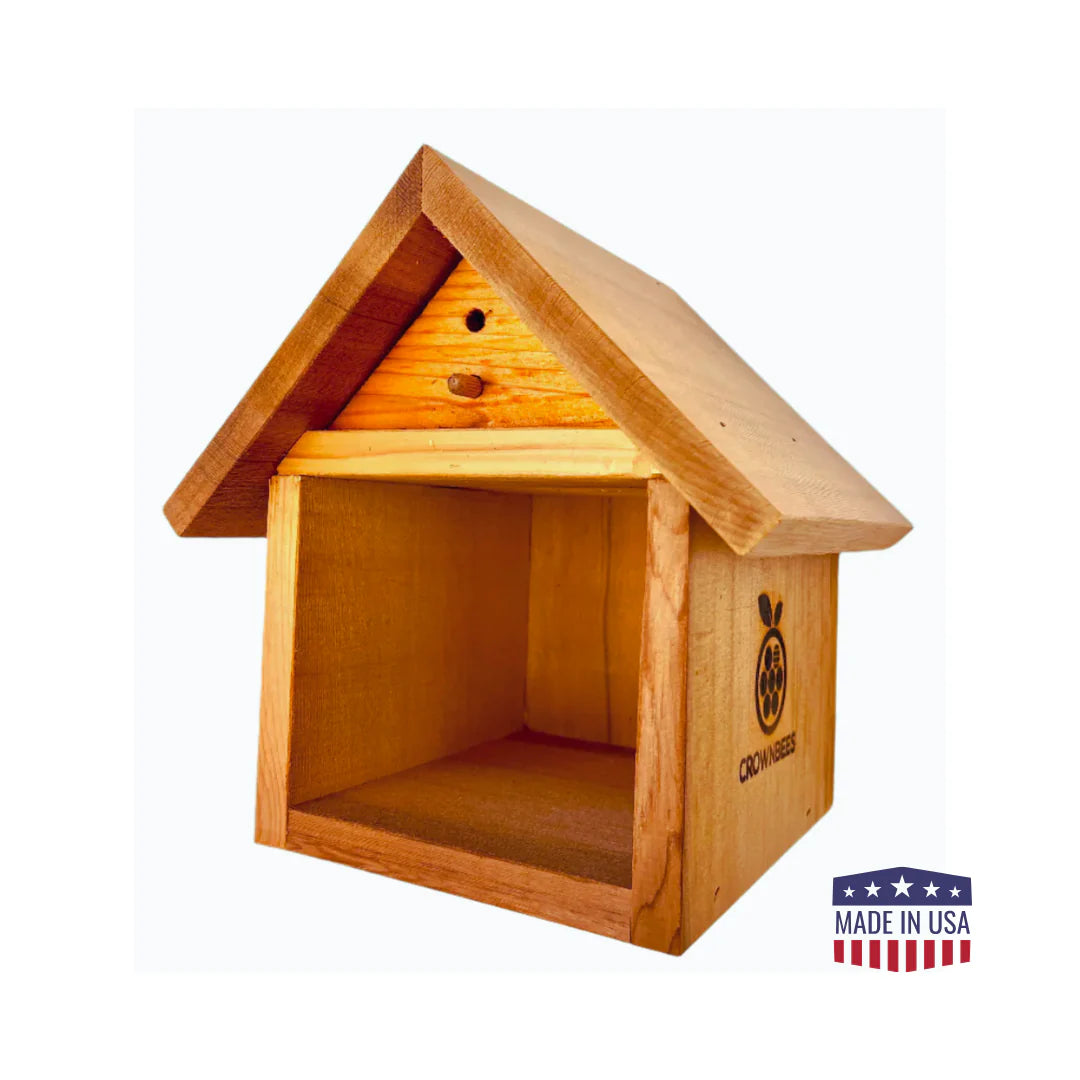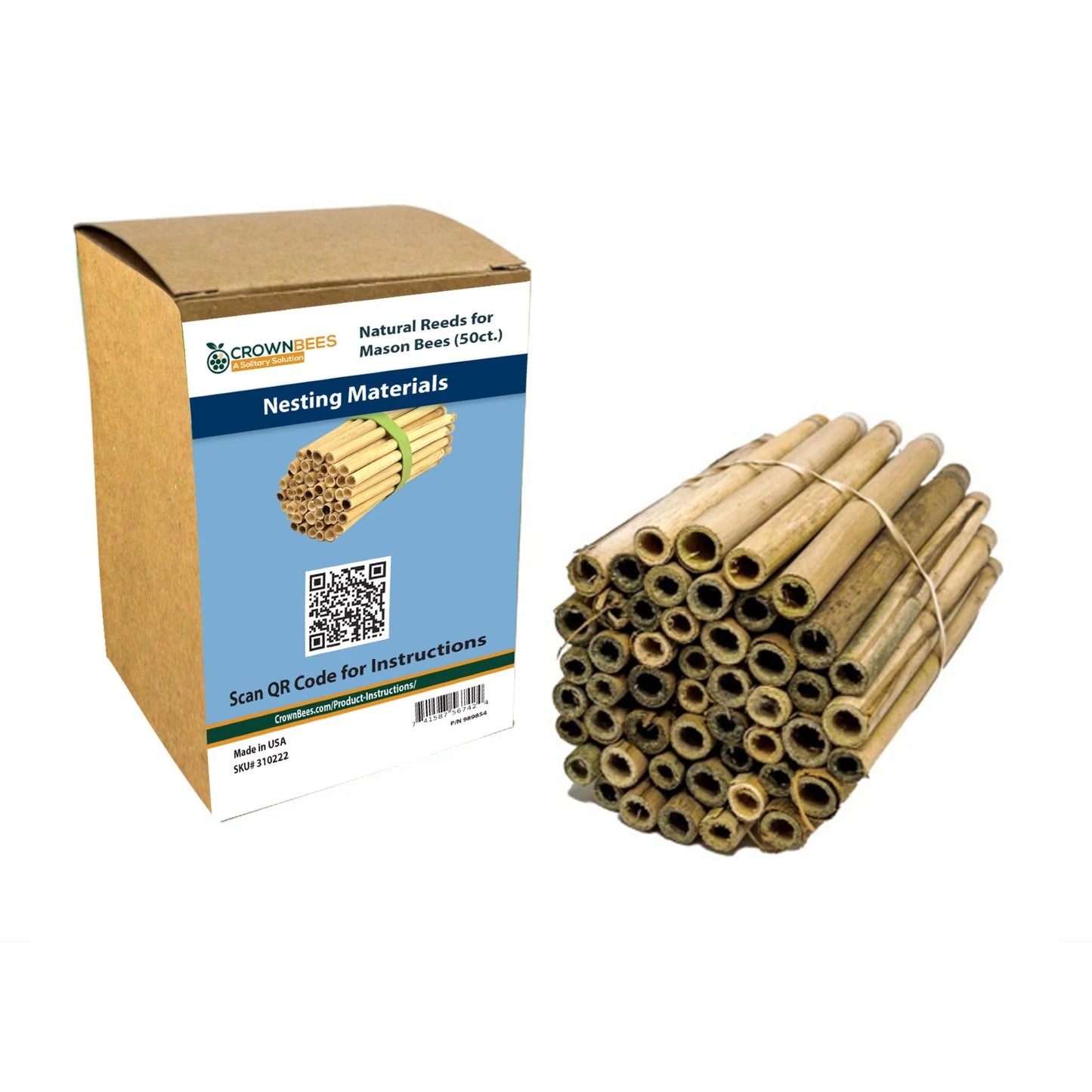Leaves They Like & How to Support Them

Summer Leaf bees (aka Leafcutter bees) belong to the Megachilidae family—the architects of the bee world. They cut soft pieces of leaves and petals to build protective walls and seal their nests. That signature behavior is where the name “leafcutter” comes from.
Close cousins, Mason bees, also belong to Megachilidae but use mud instead of leaves for construction.
See tidy circular or oval cutouts on leaves? That’s a classic sign of Summer Leaf bees—not caterpillars (which leave ragged, irregular holes).
Why Leaves Nearby Matter
In summer, females line each nesting hole with a shell of leaf and petal pieces. Because leaves are essential for safe development, females won’t nest unless a reliable source is within ~30 sq. ft. of the bee house.
Preferred Leaves
Summer Leaf bees can use almost any broadleaf deciduous plant, but they favor soft, flexible leaves and petals like alfalfa, clover, buckwheat, roses, peas/beans, lamb’s quarters, lilac, redbud, Hosta, and sunflowers.
No need to pre-cut and “offer” leaves—cut pieces wilt quickly and can stress plants. If soft leaves are present within ~30 sq. ft., the bees will find what they need.
Important: Ensure plants are free of pesticides and other chemicals; many are toxic to bees and pollinators.
Will Leafcutters Harm My Plants?
No. The small, neat cutouts are cosmetic and don’t harm plant health. Bees and flowering plants co-evolved; bees get food and nesting material and plants get pollination. We see the cutouts as “evidence of pollination in action” and a great conversation starter.
Make Sure You Have Enough Leaves
- Assess what’s there. Within ~30 sq. ft. of your bee house, do you have soft, flexible leaves during summer nesting? If yes, you’re ready for leaf bees.
- Plant a few easy leaf sources (if needed). Add a couple of soft-leafed plants near the house. We recommend native plants for broader ecosystem benefits.
Common Plants We See Leafcutter Cuts On
Some are common/naturalized but not North American natives. Native species are bolded.
- Alfalfa, Rose, Lilac
- Asters, Gaillardia, Sunflowers
- Common Chokecherry, Hosta, Bougainvillea
- Peas, Beans, Oregon Grape
- Strawberry (smooth-leafed types)
- Field Pansies, Buckwheat, False Indigo
- Lamb’s Quarters, Redbud trees, Hawthorn trees
Video: Summer Leaf Bees at Work
Help Your Summer Leaf Bees Thrive
Place your house near soft-leaf plants, avoid pesticides, and choose bee-safe nesting materials that can be opened and cleaned each season.


